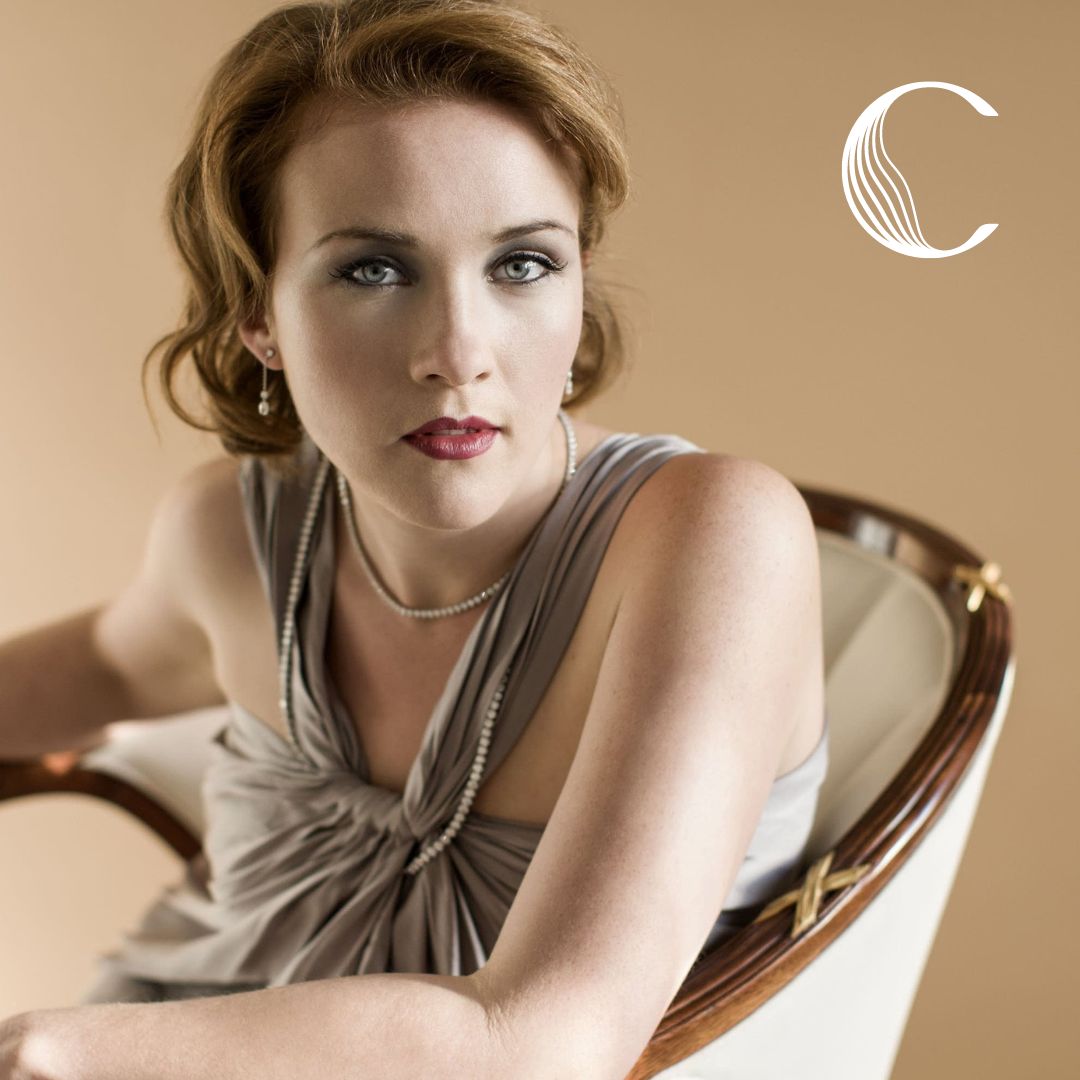SACRED BAROQUE
Bach's "Wedding Cantata" and Handel's Silete Venti (Be Silent, Winds), featuring the vocal virtuosity of soprano Joélle Harvey

Featured Artists
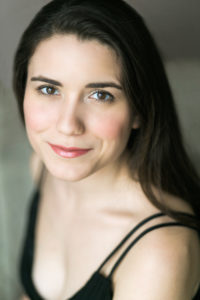 Soprano Joélle Harvey received her bachelor’s and master’s degrees in vocal performance from the University of Cincinnati College–Conservatory of Music (CCM). A native of Bolivar, New York, she began her career training at Glimmerglass Opera (now The Glimmerglass Festival) and the Merola Opera Program. Harvey’s 2022–23 season features appearances with a host of internationally acclaimed organizations. She joins the New York Philharmonic in Beethoven’s Symphony No. 9 conducted by Jaap van Zweden in The Joy, one of the two Gala concerts celebrating the opening of the new David Geffen Hall. She makes debuts with the Bamberg Symphony (in Mahler’s Fourth Symphony and Alma Mahler songs, conducted by Jakub Hrůša), Deutsches Symphonie-Orchester Berlin (Handel’s Solomon with Robin Ticciati), and Minnesota Orchestra (Haydn’s The Creation with Paul McCreesh). She also returns to The Cleveland Orchestra (Schubert’s Mass in E-flat in Cleveland and at Carnegie Hall), Chicago Symphony Orchestra (Orff’s Carmina burana), Cincinnati Symphony Orchestra (Mahler’s Symphony No 2, Resurrection), and The Metropolitan Opera (Pamina in Mozart’s The Magic Flute). Notable chamber performances include a recital with baritone John Moore and pianist Allen Perriello for Philadelphia Chamber Music Society and appearances with the Chamber Music Societies of Lincoln Center and in Palm Beach. Her other debuts this season include Jacksonville Symphony, in Brahms’s A German Requiem, and the Orchestra of St. Luke’s, in an all-Handel program conducted by Bernard Labadie at Carnegie Hall. During the summer of 2023 she will return to the Glyndebourne Festival as Handel’s Semele in a new production directed by Adele Thomas.
Soprano Joélle Harvey received her bachelor’s and master’s degrees in vocal performance from the University of Cincinnati College–Conservatory of Music (CCM). A native of Bolivar, New York, she began her career training at Glimmerglass Opera (now The Glimmerglass Festival) and the Merola Opera Program. Harvey’s 2022–23 season features appearances with a host of internationally acclaimed organizations. She joins the New York Philharmonic in Beethoven’s Symphony No. 9 conducted by Jaap van Zweden in The Joy, one of the two Gala concerts celebrating the opening of the new David Geffen Hall. She makes debuts with the Bamberg Symphony (in Mahler’s Fourth Symphony and Alma Mahler songs, conducted by Jakub Hrůša), Deutsches Symphonie-Orchester Berlin (Handel’s Solomon with Robin Ticciati), and Minnesota Orchestra (Haydn’s The Creation with Paul McCreesh). She also returns to The Cleveland Orchestra (Schubert’s Mass in E-flat in Cleveland and at Carnegie Hall), Chicago Symphony Orchestra (Orff’s Carmina burana), Cincinnati Symphony Orchestra (Mahler’s Symphony No 2, Resurrection), and The Metropolitan Opera (Pamina in Mozart’s The Magic Flute). Notable chamber performances include a recital with baritone John Moore and pianist Allen Perriello for Philadelphia Chamber Music Society and appearances with the Chamber Music Societies of Lincoln Center and in Palm Beach. Her other debuts this season include Jacksonville Symphony, in Brahms’s A German Requiem, and the Orchestra of St. Luke’s, in an all-Handel program conducted by Bernard Labadie at Carnegie Hall. During the summer of 2023 she will return to the Glyndebourne Festival as Handel’s Semele in a new production directed by Adele Thomas.
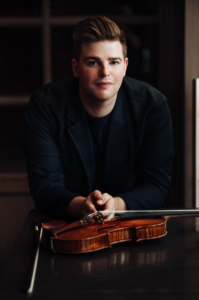 American violinist Chad Hoopes has remained a consistent and versatile performer with many of the world’s leading orchestras since winning First Prize at the Young Artists Division of the Yehudi Menuhin International Violin Competition. He is a 2017 recipient of Lincoln Center’s Avery Fisher Career Grant, and an alum of CMS’s Bowers Program. Highlights of recent seasons include performances with the Philadelphia Orchestra, Frankfurt Radio Symphony Orchestra, Orchestre de Paris, Konzerthausorchester Berlin, Vancouver Symphony Orchestra, and Orchestre National du Capitole de Toulouse. He has performed with leading orchestras including San Francisco, Pittsburgh, Houston, and the National Symphony, as well as the Minnesota Orchestra and the National Arts Centre Orchestra. He has additionally performed recitals at the Ravinia Festival, the Tonhalle Zürich, the Louvre, and on Lincoln Center’s Great Performers series. His debut recording with the MDR Leipzig Radio Symphony Orchestra under Kristjan Järvi featured the Mendelssohn and Adams concertos and his recording of Bernstein’s Violin Sonata with pianist Wayne Marshall was released in 2019. He is a frequent guest artist at the Gstaad Menuhin Festival, the Rheingau Festival, and at Festspiele Mecklenburg-Vorpommern, where he was named the winner of the prestigious Audience Award. He appeared as the cover feature on the November 2021 edition of the Strad magazine. Hoopes attended the Cleveland Institute of Music then studied at the Kronberg Academy under Ana Chumachenco. He plays the 1991 Samuel Zygmuntowicz, ex Isaac Stern violin.
American violinist Chad Hoopes has remained a consistent and versatile performer with many of the world’s leading orchestras since winning First Prize at the Young Artists Division of the Yehudi Menuhin International Violin Competition. He is a 2017 recipient of Lincoln Center’s Avery Fisher Career Grant, and an alum of CMS’s Bowers Program. Highlights of recent seasons include performances with the Philadelphia Orchestra, Frankfurt Radio Symphony Orchestra, Orchestre de Paris, Konzerthausorchester Berlin, Vancouver Symphony Orchestra, and Orchestre National du Capitole de Toulouse. He has performed with leading orchestras including San Francisco, Pittsburgh, Houston, and the National Symphony, as well as the Minnesota Orchestra and the National Arts Centre Orchestra. He has additionally performed recitals at the Ravinia Festival, the Tonhalle Zürich, the Louvre, and on Lincoln Center’s Great Performers series. His debut recording with the MDR Leipzig Radio Symphony Orchestra under Kristjan Järvi featured the Mendelssohn and Adams concertos and his recording of Bernstein’s Violin Sonata with pianist Wayne Marshall was released in 2019. He is a frequent guest artist at the Gstaad Menuhin Festival, the Rheingau Festival, and at Festspiele Mecklenburg-Vorpommern, where he was named the winner of the prestigious Audience Award. He appeared as the cover feature on the November 2021 edition of the Strad magazine. Hoopes attended the Cleveland Institute of Music then studied at the Kronberg Academy under Ana Chumachenco. He plays the 1991 Samuel Zygmuntowicz, ex Isaac Stern violin.
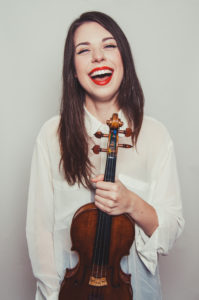 Violinist Tessa Lark is one of the most captivating artistic voices of our time, consistently praised by critics and audiences for her astounding range of sounds, technical agility, and musical elegance. In 2020 she was nominated for a GRAMMY in the Best Classical Instrumental Solo category and received one of Lincoln Center’s prestigious Emerging Artist Awards, the special Hunt Family Award. Other recent honors include a 2018 Borletti-Buitoni Trust Fellowship and a 2016 Avery Fisher Career Grant, Silver Medalist in the 9th Quadrennial International Violin Competition of Indianapolis, and winner of the 2012 Naumburg International Violin Competition. A budding superstar in the classical realm, she is also a highly acclaimed fiddler in the tradition of her native Kentucky, delighting audiences with programming that includes Appalachian and bluegrass music and inspiring composers to write for her.
Violinist Tessa Lark is one of the most captivating artistic voices of our time, consistently praised by critics and audiences for her astounding range of sounds, technical agility, and musical elegance. In 2020 she was nominated for a GRAMMY in the Best Classical Instrumental Solo category and received one of Lincoln Center’s prestigious Emerging Artist Awards, the special Hunt Family Award. Other recent honors include a 2018 Borletti-Buitoni Trust Fellowship and a 2016 Avery Fisher Career Grant, Silver Medalist in the 9th Quadrennial International Violin Competition of Indianapolis, and winner of the 2012 Naumburg International Violin Competition. A budding superstar in the classical realm, she is also a highly acclaimed fiddler in the tradition of her native Kentucky, delighting audiences with programming that includes Appalachian and bluegrass music and inspiring composers to write for her.
Tessa has been a featured soloist at numerous U.S. orchestras, recital venues, and festivals since making her concerto debut with the Cincinnati Symphony Orchestra at age sixteen. She has appeared with the Royal Scottish National Orchestra; the Louisville Orchestra and the Buffalo Philharmonic; the Albany, Indianapolis, Knoxville and Seattle symphonies; and has been presented by such venues as Carnegie Hall, New York’s Lincoln Center, Amsterdam's Concertgebouw, the Music Center at Strathmore, the Isabella Stewart Gardner Museum in Boston, San Francisco Performances, Ravinia, the Seattle Chamber Music Society, Australia’s Musica Viva Festival, and the Marlboro, Mostly Mozart, Bridgehampton, and La Jolla summer festivals.
Highlights of her 2021-22 season include debuts at London’s Wigmore Hall and Carnegie Hall’s Zankel Hall; return appearances for recital series such as Cal Performances and the Isabella Stewart Gardner Museum; and numerous concerto engagements, including the world premiere of Michael Schachter’s violin concerto, Cycles of Life, with the Knoxville Symphony in April 2022.
Tessa’s debut commercial recording—SKY, a bluegrass-inspired violin concerto written for her by Michael Torke and performed with the Albany Symphony Orchestra—earned a 2020 GRAMMY nomination, and Tessa’s discography has been expanding ever since. Recordings include Fantasy, an album on the First Hand Records label that includes fantasias by Schubert, Telemann and Fritz Kreisler, Ravel’s Tzigane, and Tessa’s own Appalachian Fantasy; Invention, a debut album of the violin-bass duo Lark and Thurber that comprises arrangements of Two-Part Inventions by J.S. Bach along with non-classical original compositions by Tessa and her fiancé, Michael Thurber; and a live performance recording of Astor Piazzolla’s The Four Seasons of Buenos Aires, released in 2021 by the Buffalo Philharmonic in honor of Piazzolla’s 100-year anniversary.
Her newest recording, The Stradgrass Sessions, is scheduled for release in 2022 and includes collaborations with composer-performers Jon Batiste, Edgar Meyer, Michael Cleveland, and Sierra Hull; original works by Tessa; and the premier recording of John Corigliano’s solo violin composition STOMP.
Tessa’s belief in music’s power to foster global connection and community across boundaries manifests in her genre-defying collaborations. Along with the Lark and Thurber duo, new projects include a string trio with composer-bassist Edgar Meyer and cellist Joshua Roman and a duo partnership with jazz guitarist Frank Vignola.
In addition to Tessa’s performance schedule, she was recently named Artistic Director Designate of Musical Masterworks, a chamber music presenter in Old Lyme, CT, for the 2021-22 season, and will assume the role of Artistic Director on July 1, 2022. Tessa is also a champion of young aspiring artists and supports the next generation of musicians through her work as Co-host/Creative of NPR’s From The Top, the premier radio showcase for the nation’s most talented young musicians; and as Mentor and board member of the Irving M. Klein International Strings Competition.
Her primary mentors include Cathy McGlasson, Kurt Sassmannshaus, Miriam Fried, and Lucy Chapman. She is a graduate of New England Conservatory and completed her Artist Diploma at The Juilliard School, where she studied with Sylvia Rosenberg, Ida Kavafian, and Daniel Phillips.
Tessa plays a ca. 1600 G.P. Maggini violin on loan from an anonymous donor through the Stradivari Society of Chicago.
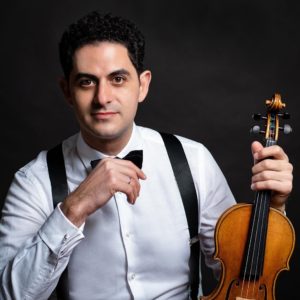 Winner of a 2009 Avery Fisher Career Grant, Arnaud Sussmann has distinguished himself with his unique sound, bravura, and profound musicianship. Minnesota’s Pioneer Press writes, “Sussmann has an old-school sound reminiscent of what you’ll hear on vintage recordings by Jascha Heifetz or Fritz Kreisler, a rare combination of sweet and smooth that can hypnotize a listener.”
Winner of a 2009 Avery Fisher Career Grant, Arnaud Sussmann has distinguished himself with his unique sound, bravura, and profound musicianship. Minnesota’s Pioneer Press writes, “Sussmann has an old-school sound reminiscent of what you’ll hear on vintage recordings by Jascha Heifetz or Fritz Kreisler, a rare combination of sweet and smooth that can hypnotize a listener.”
A thrilling musician capturing the attention of classical critics and audiences around the world, he has recently appeared as a soloist with the Mariinsky Orchestra under Valery Gergiev, the Vancouver Symphony, and the New World Symphony. As a chamber musician, he has performed at the Tel Aviv Museum in Israel, London’s Wigmore Hall, Lincoln Center’s Alice Tully Hall, the White Nights Festival in Saint Petersburg, the Dresden Music Festival in Germany, and the Phillips Collection in Washington, DC. He has been presented in recital in Omaha on the Tuesday Musical Club series, New Orleans by the Friends of Music, and at the Louvre Museum in Paris.
An alum of CMS’s Bowers Program, Sussmann is Artistic Director of the Chamber Music Society of Palm Beach, Co-Director of Music@Menlo’s International Program, and teaches at Stony Brook University.
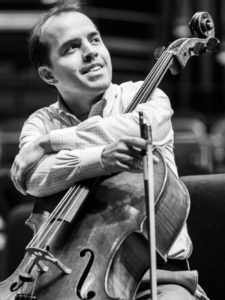 Cellist Efe Baltacigil recently made his debut with the Berliner Philharmoniker and Sir Simon Rattle alongside his brother Fora. He also performed Tchaikovsky's Rococo Variations with the Seattle Symphony, after which the Seattle Times described his "sublimely natural, so easily virtuosic, phenomenal, effortless musicianship." Recent performances include Brahms's Double Concerto with violinist David Coucheron and the Norwegian Radio Orchestra, and Richard Strauss's Don Quixote with the Seattle Symphony. He was a 2006 Avery Fisher Career Grant recipient, named 2013 String Player of the Year in Turkey, and, as a member of the European Concert Hall Association's Rising Stars program, he performed at Carnegie Hall and toured Europe in the 2006-08 seasons. Winner of the 2005 Young Concert Artists International Auditions, he made his recital debut under its aegis at Zankel Hall. He has appeared with Pinchas Zukerman and Yo-Yo Ma at Carnegie Hall, participated in Ma's Silk Road Project, and will perform at the Marlboro Festival. A member of the East Coast Chamber Orchestra, he was the associate principal cellist of the Philadelphia Orchestra until 2011 and is currently the principal cellist of the Seattle Symphony. He received his bachelor's degree from the Mimar Sinan University Conservatory in Istanbul, and earned his artist diploma from the Curtis Institute of Music. An alum of The Bowers Program (formerly CMS Two), Mr. Baltacigil plays a Francesco Rugieri cello made in Cremona in 1680 and given to him by a Turkish sponsor.
Cellist Efe Baltacigil recently made his debut with the Berliner Philharmoniker and Sir Simon Rattle alongside his brother Fora. He also performed Tchaikovsky's Rococo Variations with the Seattle Symphony, after which the Seattle Times described his "sublimely natural, so easily virtuosic, phenomenal, effortless musicianship." Recent performances include Brahms's Double Concerto with violinist David Coucheron and the Norwegian Radio Orchestra, and Richard Strauss's Don Quixote with the Seattle Symphony. He was a 2006 Avery Fisher Career Grant recipient, named 2013 String Player of the Year in Turkey, and, as a member of the European Concert Hall Association's Rising Stars program, he performed at Carnegie Hall and toured Europe in the 2006-08 seasons. Winner of the 2005 Young Concert Artists International Auditions, he made his recital debut under its aegis at Zankel Hall. He has appeared with Pinchas Zukerman and Yo-Yo Ma at Carnegie Hall, participated in Ma's Silk Road Project, and will perform at the Marlboro Festival. A member of the East Coast Chamber Orchestra, he was the associate principal cellist of the Philadelphia Orchestra until 2011 and is currently the principal cellist of the Seattle Symphony. He received his bachelor's degree from the Mimar Sinan University Conservatory in Istanbul, and earned his artist diploma from the Curtis Institute of Music. An alum of The Bowers Program (formerly CMS Two), Mr. Baltacigil plays a Francesco Rugieri cello made in Cremona in 1680 and given to him by a Turkish sponsor.
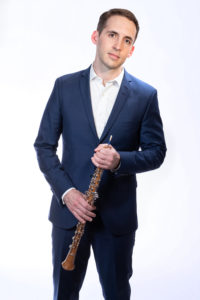 Praised for his “virtuosic,” “dazzling" and “brilliant” performances (The New York Times) and his “bold, keen sound” (The New Yorker), oboist James Austin Smith performs new and old music across the United States and around the world. Mr. Smith is an artist of the Chamber Music Society of Lincoln Center, the International Contemporary Ensemble (ICE) and Decoda, co-principal oboist of the Orpheus Chamber Orchestra and Artistic and Executive Director of Tertulia, a chamber music series that takes place in restaurants in New York and San Francisco He is a member of the oboe and chamber music faculties of Stony Brook University and the Manhattan School of Music.
Praised for his “virtuosic,” “dazzling" and “brilliant” performances (The New York Times) and his “bold, keen sound” (The New Yorker), oboist James Austin Smith performs new and old music across the United States and around the world. Mr. Smith is an artist of the Chamber Music Society of Lincoln Center, the International Contemporary Ensemble (ICE) and Decoda, co-principal oboist of the Orpheus Chamber Orchestra and Artistic and Executive Director of Tertulia, a chamber music series that takes place in restaurants in New York and San Francisco He is a member of the oboe and chamber music faculties of Stony Brook University and the Manhattan School of Music.
Mr. Smith’s festival appearances include Marlboro, Lucerne, Music@Menlo, Spoleto USA, Bowdoin, Bay Chamber Concerts, Mecklenburg-Vorpommern and Orlando; he has performed with the St. Lawrence, Parker, Rolston and Orion string quartets and recorded for the Nonesuch, Bridge, Mode and Kairos labels.
Mr. Smith received his Master of Music degree in 2008 from the Yale School of Music and graduated in 2005 with Bachelor of Arts (Political Science) and Bachelor of Music degrees from Northwestern University. He spent a year as a Fulbright Scholar in Leipzig, Germany at the Hochschule für Musik und Theater "Felix Mendelssohn-Bartholdy” and is an alumnus of Ensemble Connect, a collaboration of Carnegie Hall, The Juilliard School, the Weill Music Institute and the New York City Department of Education. Mr. Smith’s principal teachers are Stephen Taylor, Christian Wetzel, Humbert Lucarelli and Ray Still. Follow him on Instagram @jaustinsmith.
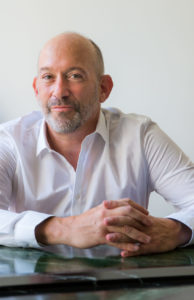 Born in New York, Kenneth Weiss began his musical studies with the piano and after attending the High School of Performing Arts, then entered the Oberlin Conservatory of Music. It is thanks to the study of the organ and the harpsichord that he discovers the extent of the old repertoire for keyboard and that he decides to devote his professional life to it. He continued his studies with Gustav Leonhardt at the Amsterdam Conservatory and from 1985 moved to France where he currently resides.
Born in New York, Kenneth Weiss began his musical studies with the piano and after attending the High School of Performing Arts, then entered the Oberlin Conservatory of Music. It is thanks to the study of the organ and the harpsichord that he discovers the extent of the old repertoire for keyboard and that he decides to devote his professional life to it. He continued his studies with Gustav Leonhardt at the Amsterdam Conservatory and from 1985 moved to France where he currently resides.
Kenneth Weiss has worked as an accompanist, vocal coach, operatic continuo player, chamber musician, conductor and soloist for several decades, performing regularly in Europe, North America and Asia. A passionate teacher, he is currently professor of chamber music at the National Conservatory of Music and Dance in Paris.
About The Music
For Johann Sebastian Bach (1685-1750), whose whole career orbited the Lutheran church and who never composed operas, the cantata became his primary vessel for solo vocal music. He composed hundreds of sacred cantatas that were sung in German during church services every Sunday and feast day, and he wrote dozens more for secular festivities, including the cantata Weichet nur, betrübte Schatten (Dissipate, You Troublesome Shadows) to celebrate a wedding. He might have composed it as early as 1714, when he was a court organist in Weimar, or maybe it came from his time as the Kappelmeister for a prince in Cöthen, from 1717 to 1723. The earliest surviving source is from the 1730s, when Bach directed music for an amateur group that performed cantatas and instrumental pieces in a Leipzig coffee shop, so he surely dusted it off there for a repeat performance.
This cantata features an obbligato oboe to complement the soprano voice in three of the arias, including the gorgeous opening aria where they hold impossibly long phrases and intertwine in fluid counterpoint. The second aria is distinctive in that it uses only basso continuo for the accompaniment (a shared bass line with played here by cello and harpsichord, with the right hand of the keyboard ad-libbing the harmonies), while the next aria uses violin as the melodic foil. The full ensemble only joins back in for the short final aria, set in the dance pattern of a Gavotte.
The German-born George Frideric Handel (1685-1759) found his greatest fame in England, but he got there by first mastering Italian opera. At 18, he got a job at the opera house in Hamburg, Germany, initially joining the second violin section and later playing harpsichord in the continuo group. Sometime around then he composed the Oboe Concerto in G Minor (HWV 287), trying his hand at another style that emanated from Italy. The slow-fast-slow-fast pattern of the movements was a signature of Arcangelo Corelli and other Roman composers, while the dotted rhythms (i.e. alternating long and short notes) in the Grave first movement and Sarabande designation in the third point to the influence of the dance suites that were all the rage then in France. Handel borrowed from himself—in what would be a fruitful, lifelong practice—to craft a lively finale out of the theme he used in the Grave.
After his time in Italy, Handel found a job working for a German prince in Hanover who happened to be the closest living protestant relative (a second cousin) to England’s Queen Anne. Handel capitalized on that relationship with the future King George I by establishing ties with London, and in 1711 he wrote the first Italian opera created expressly for British audiences. It proved to be a spectacularly appealing and lucrative endeavor, and Handel set himself up as the top impresario for Italian opera in London—not just composing the scores, but also producing and conducting the performances, selling subscriptions, and importing the best Italian divas to sing his florid vocal parts. Handel was so at home in England that he became a citizen in 1727, and when the local appetite for Italian opera finally waned in the 1730s, he remade himself as a composer of oratorios set in English, including his immortal Messiah.
In 1732, when Handel presented Esther, his very first English oratorio, some of the music was recycled from an earlier project he composed between 1723 and 1725, Silete Venti. With a sacred text in Latin, Handel described that score as a motet—a term for a type of sacred vocal music that often used multiple singers—but stylistically it is really akin to Handel’s cantatas, those mini-operas for voice and ensemble. A stately overture in the French style whips itself up into a windy, contrapuntal storm, setting up an arresting entrance for the soprano who commands the winds to be silenced in the title aria. The love song that comes next (Dulcis amor) would be right at home in an opera, except that the object of rapture in this case is Jesus. In a pleasing bit of symmetry, the aria Date serta invites the winds to arise in a dramatic contrasting section so as to welcome back the “bright breezes of heaven.” The single word of the final aria, Alleluia, lets the soprano show off on endless “ahs” that spin in a triplet pulse related to the gigue dance that often appeared at the end of French suites.
CMSPB does not discriminate on the basis of race, gender, creed, ethnicity, religion, sexual orientation, age or disability and we are a 501(c)(3) nonprofit organization.
Site maintained by Teller | © 2020-2022 Chamber Music Society of Palm Beach | All rights reserved.
